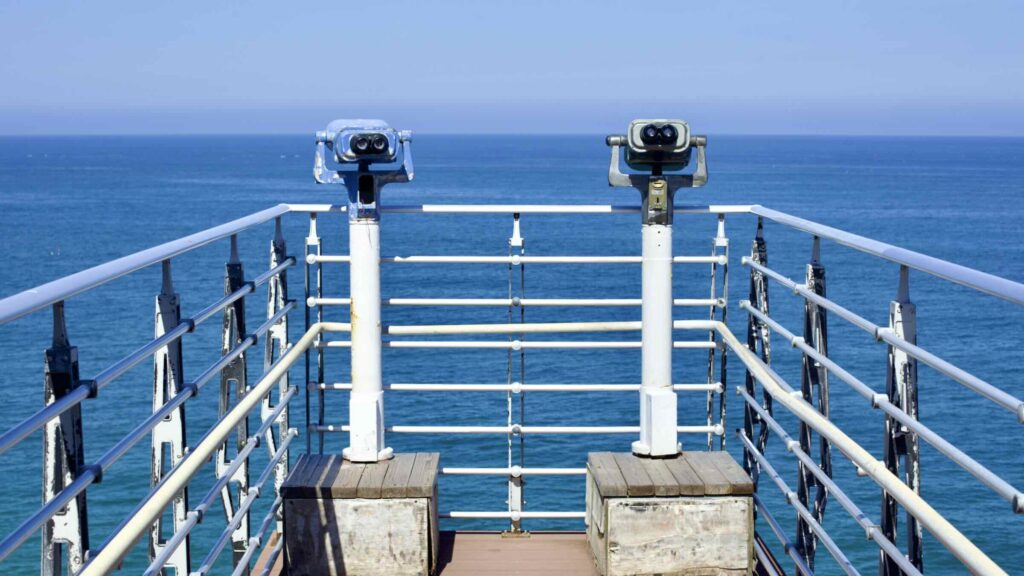
Uljin County
Uljin County (울진군; map) is the northernmost North Gyeongsang District on the East Sea. It sits midway up South Korea’s eastern coastline.
- Population: 46,849
- Size: 990 km²
- Density: 47 people per km²
- Main Population Center: Uljin Town (울진읍; map)

Uljin was once a part of the northern Gangwon Province. However, the county switched to North Gyeongsang Province in 1962 to get closer to the province’s booming economies in Pohang and Andong Cities.
- To the north: Samcheok City in Gangwon Province.
- To the south: Yeongdeok County.
- To the east: the East Sea.
- To the west: Bonghwa County & Cheongsong County
Historically, the Taebaek Mountain Range and East Sea isolated the county from the rest of the nation. But its seclusion also allowed it to preserve its forests, mountains, and coast.
Coastal Uljin
Uljin sits on the East Sea. While mountains and forests cover the county’s western regions, all of its major towns live on the coast. Let’s explore them.
Ports
Fishing boats and bustling markets fill Uljin’s two busiest ports. Here’s a brief glance at the country’s two most prominent:
- Hupo Port (후포항; map) is the largest port in Uljin County. It accommodates both cargo ships and fishing boats. Each morning, over 170 fishing vessels depart Hupo in search of snow crab, octopus and cod. Deunggi Mountain sits on the port’s north edge. It holds a picturesque park, lighthouse, and see-through skywalk that extends over the East Sea.
Jukbyeon Port (죽변항; map) is Uljin’s most tourist-friendly port. It features a handful of highlights including a coastal monorail, lighthouse, and nearby maritime museum. Each day, its busy fish market auctions off fresh-caught squid, pollack, and snow crabs.
Other Highlights
Let’s check out Uljin’s seaside landmarks:
- Mangyang Pavilion (Mangyangjeong; 망양정; map) is one of eight scenic spots along Korea’s east coast. This 700-year-old pavilion sits on top of a coastal hill with a panoramic view of the East Sea.
- Wolsong Pavilion (Wolsongjeong; 월송정; map) is another one of eight scenic spots along the Korean coast. Perched next to the East Sea, a forest of pine trees surrounds the pavilion.
- Sweetfish Bridge (은어다리; map) is a 243-meter-long pedestrian bridge that crosses Namdae Stream as it flows into the East Sea. The walking and cycling path passes through the mouths of two giant, shiny metallic fish.
The Snow Crabs of Uljin
What’s Ullin’s biggest star? Snow crabs.
Every year in late February, Uljin’s Hupo Port holds the Uljin Snow Crab Festival (울진대게와 붉은대게축제). This three-day event includes an opening ceremony, singing contest, bare-handed fish catching, and a special cruise to Ulleung Island (Ulleungdo; 울릉도; map), which sits 120 kilometers (75 mi) off the peninsula in the East Sea.
What’s the traditional way to eat snow crabs? Steamed. Pick one out from the display tank in front of the restaurant. They drop it in a steamer for 15 minutes. Voila! Ready for chow.
But there’s more than one way to cook a snow crab. New iterations include:
Inland Uljin
While the coast dominates Uljin’s east, mountains and forests cover the county’s less populated western regions. Here are some of the county’s terrestrial highlights.
- Deokgu Hot Springs (덕구온천; map) is a naturally occurring hot spring in a remote canyon. Nearby resorts pump its waters 4 kilometers to their compounds. The hot spring’s 43°C (109°F) sodium bicarbonate waters are said to help relieve everything from skin diseases to muscle fatigue.
- Buryeongsa Valley (불영사계곡; map) is a winding valley. The sightseeing road that runs through it is famous among car cruisers and cyclists, especially in autumn. (Intercity buses that travel it provide vomit bags.) The valley’s name comes from the local Buryeongsa Temple (불영사; map).
- Seongnyu Cave (Seongnyugul; 성류굴; map) is an 870-meter-long limestone cave. Designated a natural monument, it was the first cave in Korea opened to tourists.
- Baekam Hot Springs (백암온천; map) is a famous mild alkalinity, harmlessly radioactive hot spring that reaches 53°C (127°F). It was first found over a thousand years ago, but developed during the Japanese occupation (1910 ~ 1945) and modernized in the 1970s.
- Uljin Geumgang Pine Forest Road (울진금강송숲길; map) is a hiking trail that winds through Uljin’s western mountains. The trails feature Geumgangsong or red pine trees. The county often restricts hiking on the forest road to prevent fires.
- Gusugok Natural Recreation Forest (구수곡자연휴양림; map) sits in a valley below Eungbong Mountain (응봉산; map). It features red pine trees, mountain goats, and waterfalls. The name derives from the place where waters from nine valleys converge.
Inland Delicacies
Like its coast, Uljin’s forests bring a culinary bounty. The county’s specialties include Matsutake mushrooms, blueberries, and Chwinamul (취나물; bitter, wild leafy greens).
The Snow Crabs of Yeongdeok & Uljin
Since the Kingdom of Goryeo (918 ~ 1392 CE), both Yeongdeok and Uljin Counties earn their reputation for being the only districts in Korea to catch snow crabs.
Snow crabs range from 13 to 15 centimeters long (5 ~ 6 inches). They have wide, bumpy foreheads and triangular bodies. Their long legs, which are stuffed with succulent meat, resemble bamboo shoots.
These critters live between 30 to 1,800 meters deep on muddy sea floors and rocky outcrops. They’re mostly found off the coast of Alaska, Greenland, and the East Sea.
Wangdolcho (왕돌초) is an reef that sits 23 kilometers off the coast of Uljin in the East Sea. Rising from 60 to 3 meters below the sea surface, this underwater mountain hosts over 120 marine species and an abundance of meat-bloated snow crabs.
Snow crab season runs from November to May, with crabs reaching peak weight in late-February. During this time, fishing boats from Yeongdeok and Uljin journey to Wangdolcho, fill their hulls with snow crabs, then sail back to their respective ports.
So the neighboring Uljin and Yeongdeok Counties live in harmony, each taking their own share of snow crabs and spreading the wealth? Right.
Not exactly.
In the 20th century, both Yeongdeok and Uljin were remote counties, cut off from the rest of Korea by the Taebaek Mountains. However, Yeongdeok had a better infrastructure. So Uljin fishers often sent their catch to Yeongdeok’s larger Ganggu Port to sell to wider markets.
Yeongdeok often rebranded Uljin-caught snow crabs as Yeongdeok snow crabs. This grew Yeongdeok’s reputation as the snow crab capital of Korea, leaving some Uljin fishers obscured and perturbed.
Over the years, Uljin has waged a PR campaign to enhance their brand as snow crab producers. They built monuments such as Golden Crab Park and hold the Uljin Snow Crab Festival every February to compete with Yeongdeok’s own seasonal event.







